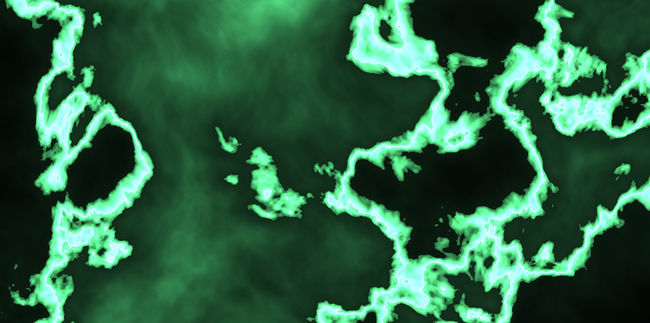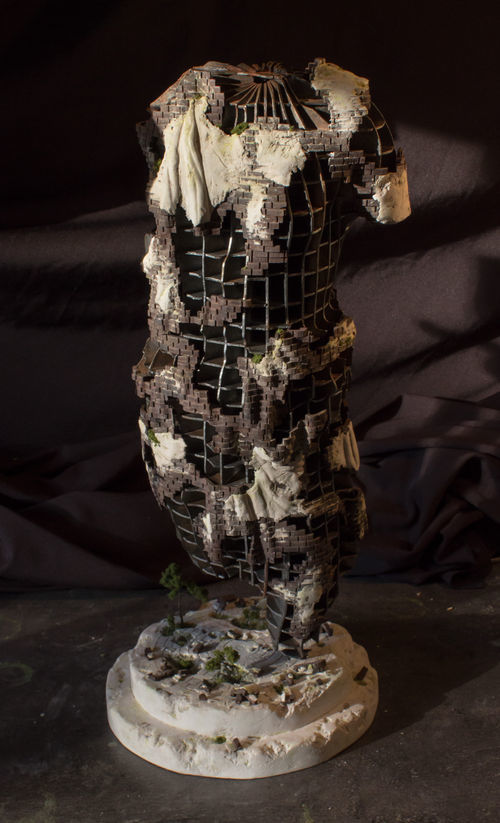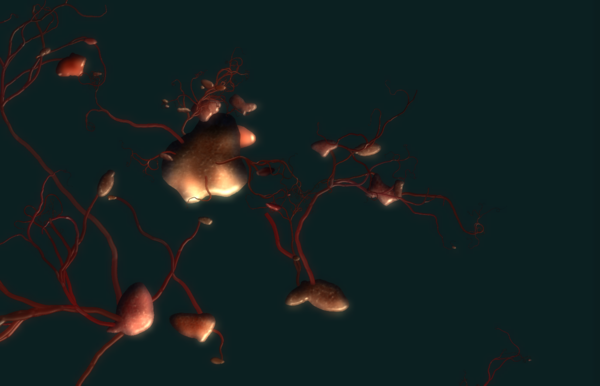User:TimDemper/statement
I think digital technologies are sometimes more interesting and sometimes less interesting than traditional technologies. Sometimes the digital technologies are better to use to get to the result I want, and sometimes traditional technologies are more interesting. I use whatever method or medium works best, to get the result I want. I use digital technologies instead of modern technologies, because digital technologies are the most significant and interesting part about modern technologies I use.
Normally I make things from scratch. I have an idea in my head, I make sketches, and make the artworks. The idea isn’t always very clear, I usually have vague ideas or images in my head of what the artwork could look like. The concept of the artwork and the idea becomes clearer when I actually make the artwork. Sometimes I also have an idea and it changes while I build the artworks.
I used a lot of different techniques and media to make the amazon sculpture. Some of the (traditional) techniques I already knew a lot about. But it was a bit different to use them in combination with digital techniques.
I sculpted clay for example over a digital fabricated frame, and made a plateau of clay and made the stones with a digital print. I think both digital and traditional techniques have advantages and disadvantages. Digital techniques were great for building some particular (repetitive) structures. Like the metal plates and the layers of stones. The metal plates would be a pain to make by hand and would never look so nice. The bricks are also very hard to make if you had to sew out every layer. There are of course other techniques to make bricks, just make them from clay for example. But it wouldn't give such a tight look. And the rhino script was probably more work than just sculpting all the stones. But I have the script now and could use it on any other 3d model so that's an advantage.
However I usually make objects from scratch so I don't have a 3d model. For me it's a lot easier to just sculpt things than make it first in a 3d program, especially because I usually make a lot of organic or natural shapes. Fine structures like broken off rocks, small trees and fine organic surfaces don't have a good digital alternative.
The 3d printers at school only create the shape of objects. 3d printing in color is possible, but is expensive. And there is a lot that could, and probably will be improved in the future. And of course there are other qualities of objects 3d printers can't make. Variable gloss, translucency, very fine structures, variable flexibility etc. Some shapes are on the other hand very hard or even impossible to make without a 3d printer. It is best for me to not only use 3d fabrication techniques, but mixing them with traditional techniques.
I think one of the most interesting parts about digital technologies is that it can make objects moving and interactive. With the use of an Arduino, or other microcontroller or just electronic components you can make objects moving and interactive. For fabricating things there is almost always a traditional way to make it, sometimes really time consuming however. But for making objects interactive and moving, digital technologies are about the only option you have. You have some traditional ways to make things mechanically interactive and moving with gears for example, but it’s all limited or very hard to make.
Here I made an object move with a simple motorized pump and a balloon as the lungs of the organism:
https://www.youtube.com/watch?v=hslXbYxnDRM
And here I made the organisms on my landscape interactive and moving by letting them react on the environment.
https://www.youtube.com/watch?v=gKtuNjiGRm4
In this project the organism only move slightly, but in the future I’d like to learn more about ways to make objects moving or interactive. Maybe letting the organism actually move to different positions, or give them some intelligence.
I sometimes use code or programs to create generated or interactive artworks. The interesting part about code is that it does exactly what you want it to do. You have the freedom to create anything happening on the screen, as long as it is supported by the language and it is technically doable of course.
I’m interesting in creating new realities. A lot of my artwork is about the possibility of alternative realities. Because. If you generate the artwork there is less of a human touch to the artworks. This way you can only use a set of rules to generate artworks, without the influence of how humans think. Because I can imagine there aren’t any humans in a completely different reality. Of course there can be humans, but think the possibility that there aren’t any humans is more interesting to me.
There are formulas or there can be a mathematical model for most of the things happening in the real world. Some aren’t discovered yet, or are too complicated for humans or their computers. There are theories that the world could be one big computer model, controlled by a super computer powerful enough to calculate all the things happening. (http://www.simulation-argument.com/)
An interesting aspect about generated artwork is that the results are somewhat unexpected. You can generate fractals for example, and create a whole new image with only a set of rules.
This is a generated 3d fractal. You can edit the formulas to create different kind of shapes. Some shapes look somewhat recognizable to things from the real world and some shapes look completely alien or random.

This is a still shot of a pixel a shader.

It’s a very simple Perlin noise shader, which is used to create smoke or fire like structures. I also created some fractals with it, but it is very difficult to create interesting images with it. I will probably try to make more interesting images with it in the future. Here are some examples of what you can make with pixel shaders: https://www.shadertoy.com/user/iq. This is a user on this particular site who creates some very interesting pixel shaders. The nice thing about pixel shaders is that you can theoretically generate any (moving) image possible on the screen. This is a good way to create alternative realities since you can create images that aren’t imaginable without it.
Here I generated different types of organism using a code that creates random shapes, with random branches, and on the branches there are random shapes. An algorithm similar to how trees grow in the real world. This script is quite limited, it only creates random organisms. But I could make it more interesting in the future, by letting them reproduce and emulate evolution and recreate different kind of organism. Or make them react on the environment that can be generated and influenced by the organisms as well.
I also use digital techniques just as a tool to fabricate my artworks. For example I use Photoshop sometimes to see what color would look best on an object, or add certain element. This way you can sketch different possibilities of the artwork without actually making them. Or I use it just to calculate and print the little tiles on a plateau. Sometimes it is a good idea to make a 3d model of the idea that you have. But this is too much effort for most shapes; you could better just make them from clay in a lot of cases. But when you need to make geometrical shapes of repetitive objects it is sometimes a good idea to make a 3d model of the object.
Digital technologies are sometimes very useful and sometimes still a bit limited. There will probably improve a lot in the future. I like the digital technologies especially for making things moving or interactive, or making generated artworks. I use digital technologies for fabricating things mostly as a tool, and not as a way to fabricate whole objects.

